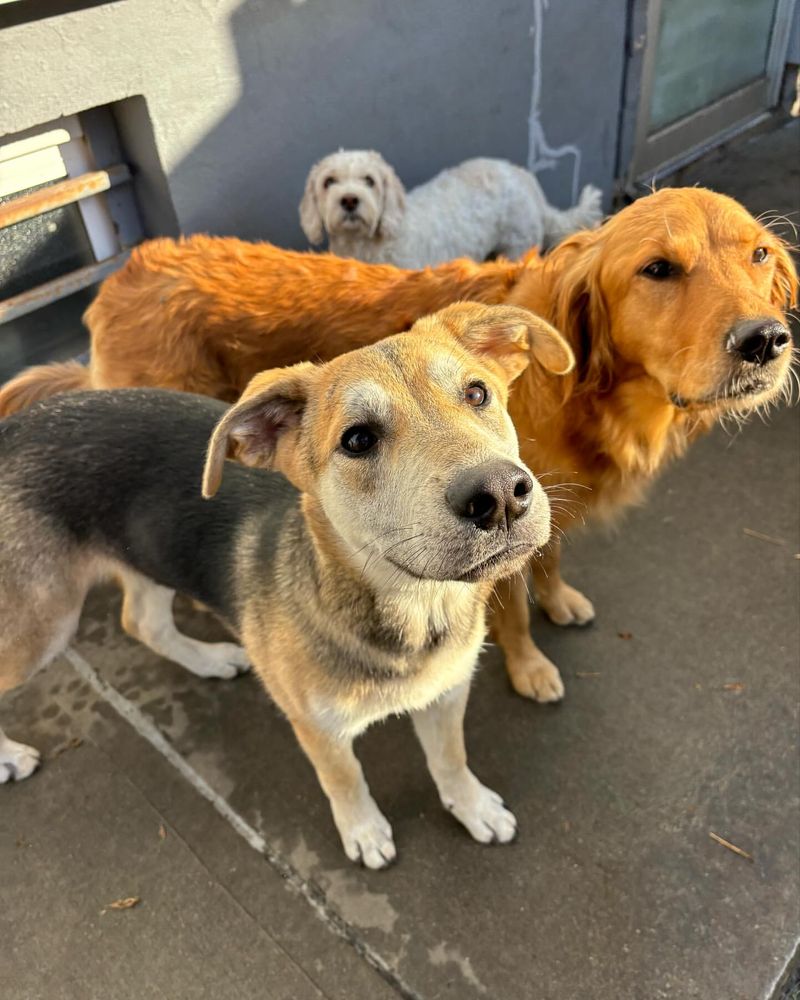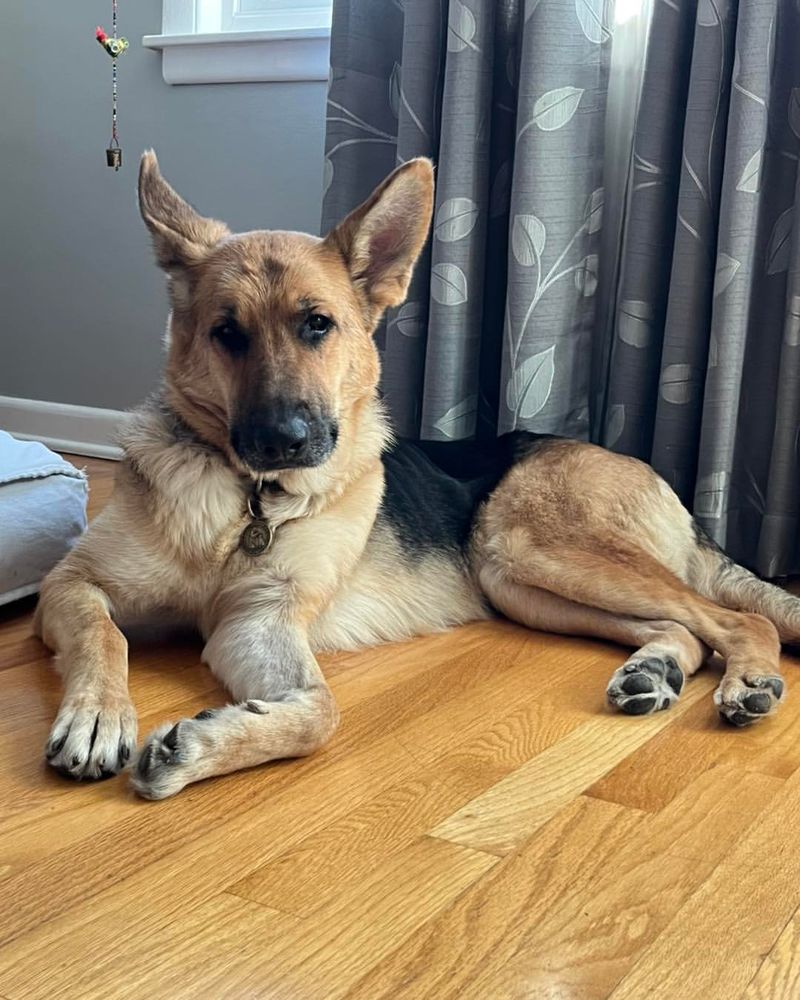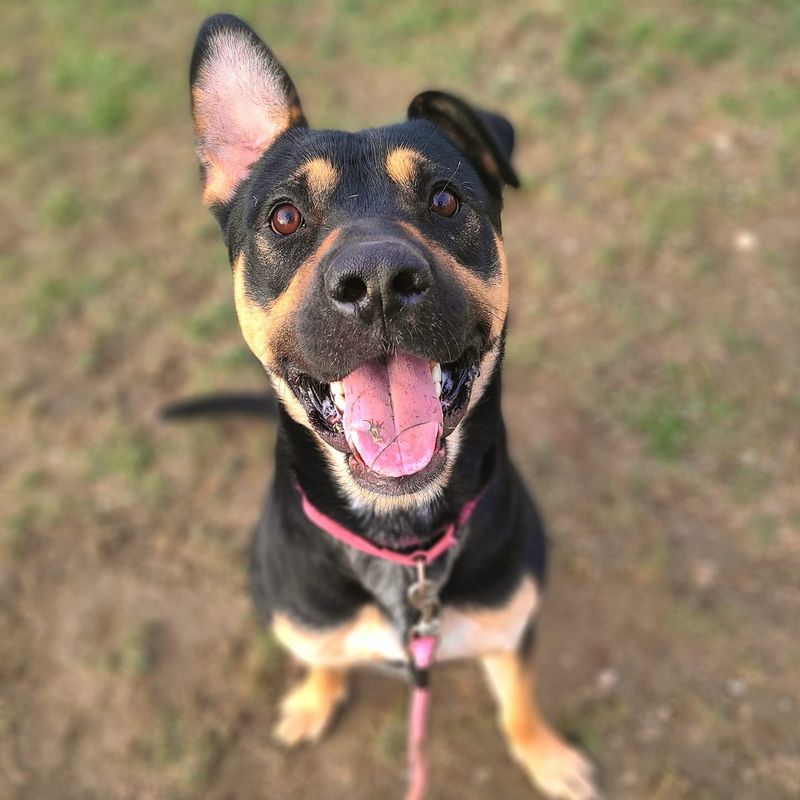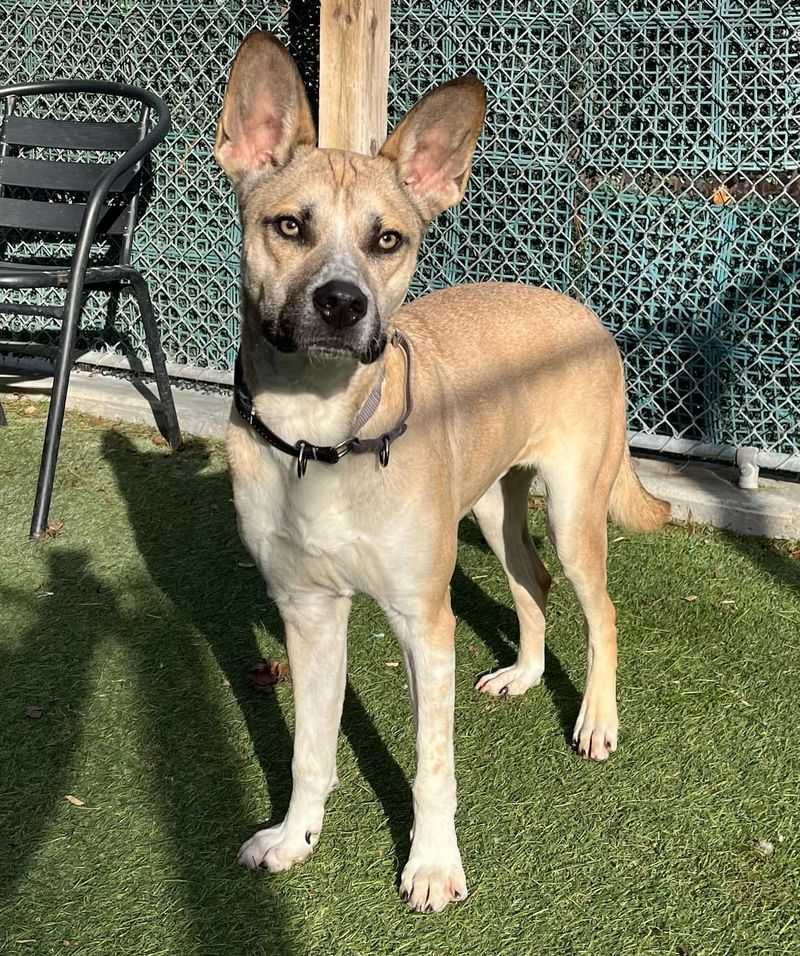While many dog owners are familiar with their pets’ fear of thunderstorms, the reasons behind this anxiety can often be surprising.
Beyond the loud noises, there are a multitude of factors that can contribute to a dog’s discomfort during these natural events. So, here are unexpected causes that may explain why your furry friend is so fearful during a storm.
1. Barometric Pressure Changes

Changes in barometric pressure can significantly influence a dog’s behavior. Dogs have a keen sense of atmospheric changes, which is why they often act differently even before a storm begins.
The pressure drop can feel disorienting, much like the sensation humans experience in their ears when elevation changes. This feeling of unease can trigger anxiety in dogs, making them restless and fearful as a storm approaches.
When a thunderstorm is looming, dogs may become more aware of their environment, sensing changes in the atmosphere that are imperceptible to humans. The sensation they feel might not be painful, but it can be uncomfortable enough to cause noticeable distress.
Owners might notice their dogs pacing, whining, or seeking comfort from their humans. Understanding this aspect of dog behavior can help owners better prepare for their pets’ reactions during a storm.
Providing a safe space or using calming aids can help alleviate some of the stress associated with pressure changes. By recognizing these signs, owners can take proactive steps to comfort their dogs.
2. Static Electricity Buildup

Static electricity buildup is an often-overlooked factor that can cause dogs to fear thunderstorms. As a storm approaches, the air becomes charged with electricity, which can cause a dog’s fur to stand on end.
This sensation is not only uncomfortable but can also be startling, especially if the dog experiences small static shocks. Dogs with longer fur are particularly susceptible to static electricity, as their coats can easily become charged.
This can lead to a cycle of anxiety, as the dog becomes more agitated due to the uncomfortable sensations. To mitigate this issue, pet owners can use anti-static sprays or lightly dampen their dog’s coat with water during a storm.
Creating a comfortable environment, such as a room with minimal static buildup, can also help. These simple measures can significantly reduce a dog’s anxiety, making thunderstorms a less traumatic experience for them.
3. Infrasound Sensitivity

Infrasound sensitivity is another unexpected cause of fear in dogs during thunderstorms. Infrasound refers to sound waves with frequencies below the range of human hearing, but which dogs can detect.
These low-frequency sounds are produced by various natural phenomena, including thunderstorms, and can be unsettling for dogs. During a storm, a dog might react to these inaudible sounds with behaviors that suggest anxiety, such as hiding, trembling, or excessive barking.
These sounds can create a sense of threat, as they are unusual and unfamiliar. Owners can help their pets by providing a quiet, insulated area where the effects of infrasound are minimized.
Using white noise machines or playing calming music can also help mask these low-frequency sounds, providing comfort and reducing anxiety. Understanding infrasound’s impact can help owners better empathize with their pets’ experiences during a storm.
4. Ozone Smell Sensitivity

Dogs have an incredible sense of smell, and the unique scent of ozone produced during a thunderstorm can be a source of anxiety for them. This sharp, fresh smell is caused by lightning splitting oxygen molecules, which then recombine to form ozone.
While this scent might go unnoticed by humans, it can be quite pronounced for dogs. This distinctive smell, combined with other storm-related changes, can cause dogs to feel unsettled.
The unfamiliarity of the scent can trigger a dog’s instinctive fear response, leading to behaviors such as hiding, whining, or destruction. To help dogs cope, owners can provide a familiar and calming scent in their safe space, such as a piece of clothing with their scent or a favorite blanket.
These familiar smells can help counteract the anxiety-inducing scent of ozone, providing comfort and security during a storm. Recognizing the role of scent in a dog’s fear response is crucial for helping them feel safe.
5. Fear of Loud Noises

Fear of loud noises is a well-known cause of anxiety in dogs during thunderstorms, but the reasons behind this fear can vary. The sudden, unpredictable nature of thunder can be startling and overwhelming for dogs, triggering a fight or flight response.
For some dogs, the loudness of thunder can be physically painful, affecting their sensitive hearing. This can lead to a heightened state of anxiety, as the dog may associate the sound with danger or discomfort.
To help dogs cope with loud noises, owners can create a quiet and secure environment where the sounds are less intrusive. Playing soothing music or using soundproofing techniques can help reduce the impact of thunder.
Providing distractions, such as toys or treats, can also help shift the dog’s focus away from the noise. By understanding their pet’s fear of loud sounds, owners can take steps to minimize its effects during a storm.
6. Past Traumatic Experiences

Past traumatic experiences can significantly contribute to a dog’s fear of thunderstorms. Dogs that have previously encountered distressing situations during a storm may develop a lasting fear response.
This could be due to a past injury, a close call with lightning, or witnessing another animal or person react fearfully. These experiences can leave an imprint on a dog’s memory, causing them to associate storms with danger.
Each subsequent storm can trigger a similar fear response, even if the current situation is not threatening. Helping a dog overcome such fears involves building positive associations with thunderstorms.
Gradual desensitization, through controlled exposure and rewarding calm behavior, can help. Patience and understanding are key, as it’s important to move at the dog’s pace. Addressing past trauma can help alleviate storm-related anxiety and improve the dog’s overall well-being.
7. Lack of Safe Spaces

A lack of safe spaces can exacerbate a dog’s fear of thunderstorms. Dogs instinctively seek shelter when they feel threatened, and not having a designated safe space can increase their anxiety. A cluttered or chaotic environment can make it difficult for a dog to find comfort during a storm.
Creating a dedicated safe space can help dogs feel secure. This area should be quiet, comfortable, and away from windows or doors where storm noise is prevalent.
Adding familiar items, such as a favorite blanket or toy, can further enhance the sense of safety. Owners should encourage their dogs to use this safe space during calm times, so it becomes a comforting refuge during storms.
Training a dog to associate this space with positive experiences can reduce their anxiety and help them cope better with their fear of thunderstorms.
8. Owner’s Anxiety Transfer

Dogs are incredibly attuned to their owners’ emotions and can pick up on anxiety or fear displayed by their human companions. If an owner is anxious during a storm, their dog may mirror these feelings, believing there is a reason to be afraid.
This transfer of anxiety can create a cycle of fear, as the dog becomes more agitated in response to their owner’s stress. It’s essential for owners to remain calm and composed during a storm to help reassure their pets.
Practicing calming techniques, such as deep breathing or using a soothing voice, can help reduce an owner’s anxiety. This, in turn, can have a calming effect on their dog. By consciously managing their emotions, owners can create a more comforting environment for their pets during a storm.
9. Electromagnetic Field Sensitivity

Some dogs may have an acute sensitivity to electromagnetic fields (EMFs), which are emitted during thunderstorms. These fields can be perceived by certain dogs, causing feelings of discomfort or agitation.
The presence of EMFs might be unsettling, as they are not part of the dog’s usual sensory experience. This sensitivity can lead to behaviors such as restlessness, pacing, or attempts to escape the area.
Understanding that EMFs can affect dogs differently is key to addressing their storm-related anxiety. Owners can help by creating an environment that minimizes EMF exposure, such as turning off unnecessary electronic devices.
Providing a distraction, like a game or a treat puzzle, can also help shift the dog’s focus away from the storm. Recognizing this unusual sensitivity can aid in creating a more calming atmosphere for anxious dogs.
10. Genetic Predisposition

Genetic predisposition plays a role in how dogs react to thunderstorms. Certain breeds may be more prone to anxiety due to inherited traits. For example, herding breeds like Border Collies and German Shepherds are known for their intense sensitivity to environmental changes.
While genetics can influence a dog’s reaction, it’s not the sole determinant. Each dog’s individual experiences and environment also play significant roles in shaping their response.
However, understanding a breed’s typical behavior can inform how owners approach storm-related fears.
Tailoring strategies to suit a dog’s genetic disposition, such as providing extra comfort or engaging in calming activities, can help manage their anxiety. Recognizing a dog’s breed-specific tendencies is crucial in creating a supportive environment during thunderstorms.

